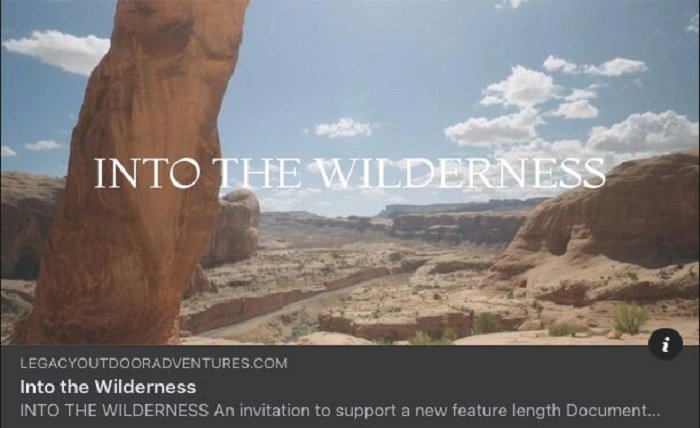Introduction
When it comes to therapeutic programs for adolescents struggling with mental health, substance abuse, and behavioral issues, wilderness therapy programs like Bluefire Wilderness Therapy offer a unique and effective approach. But, before embarking on this life-changing experience, you might be wondering, where is Bluefire Wilderness Therapy located?
This blog post will answer that question in detail, explore the program’s benefits, and provide insights into the location of Bluefire Wilderness Therapy, helping you make an informed decision for your loved one.
Where is Bluefire Wilderness Therapy Located?
Bluefire Wilderness Therapy is located in the picturesque and tranquil wilderness of Southern Utah, a region known for its stunning landscapes, red rock formations, and natural beauty. Situated among the deserts and forests of the area, this therapeutic wilderness setting offers a peaceful and nurturing environment where adolescents can disconnect from daily distractions and immerse themselves in nature.
The exact location of bluefire wilderness Therapy is nestled near the iconic Zion National Park, which allows for a serene yet invigorating environment, ideal for growth and healing. The surrounding natural features are carefully chosen to enhance the therapeutic process and allow young people to reflect on their behaviors, improve their coping skills, and engage in outdoor challenges that foster resilience and emotional strength.
The Therapeutic Approach of Bluefire Wilderness Therapy
Now that we know where Bluefire Wilderness Therapy is located, let’s explore the innovative therapeutic model employed by the program. Bluefire uses a combination of experiential therapy, cognitive-behavioral therapy (CBT), and wilderness experiences to address the emotional and behavioral challenges that adolescents face. The program is designed for those struggling with issues such as anxiety, depression, trauma, substance abuse, and defiance.
Throughout their time at Bluefire, adolescents engage in a variety of activities like hiking, backpacking, and group therapy sessions, all of which take place in the outdoor wilderness. This type of environment encourages self-reflection, teamwork, and personal growth while allowing students to disconnect from the digital distractions of modern life.
The wilderness setting itself serves as a powerful tool for emotional healing, making Bluefire Wilderness Therapy’s location essential to its success. The majestic surroundings not only create a calming atmosphere but also challenge the teens to face obstacles head-on, build trust, and develop problem-solving skills.
The Benefits of Wilderness Therapy in Southern Utah
When considering where Bluefire Wilderness Therapy is located, the natural benefits of the region should be highlighted. Southern Utah offers a unique climate and diverse geography that makes it an ideal spot for outdoor therapy. The desert climate provides ample sunshine, which can improve mood and energy levels. The varied terrain, including mountains, canyons, and forests, provides opportunities for physically challenging activities that build resilience, improve confidence, and foster team cohesion.
The program’s location near Zion National Park also means that students experience a dynamic blend of environments, from the stark beauty of desert landscapes to the lush areas near waterways. This variability in scenery helps foster adaptability and resilience, two key components of the healing journey at Bluefire Wilderness Therapy. The natural beauty of the surroundings plays an important role in the therapeutic process, creating a safe and peaceful space for young people to confront their challenges.
How Long Do Adolescents Stay at Bluefire Wilderness Therapy?
The length of stay at bluefire wilderness Therapy can vary depending on the individual’s needs and progress. However, most adolescents typically stay for about 8 to 10 weeks. During this time, they participate in structured therapeutic activities, including individual counseling, group therapy, and outdoor expeditions. The program is designed to address specific challenges that each teen faces and provide tools for long-term success.
Given the challenging and transformative nature of wilderness therapy, the extended stay is crucial for ensuring that participants undergo meaningful personal growth and learn valuable life skills. Many families report significant positive changes in their adolescents’ behaviors, attitudes, and emotional well-being after completing the program.
What Can Families Expect from Bluefire Wilderness Therapy?
Families play an integral role in the Bluefire Wilderness Therapy program, even though the therapy is conducted in a remote wilderness location. Parents and family members are kept updated regularly through family therapy sessions, phone calls, and progress reports. This connection ensures that families stay engaged in the healing process and can continue supporting their child once they return home.
The family-focused approach of the program is important because it helps mend the relationships that may have been strained due to the adolescent’s behavioral challenges. At Bluefire, therapists work with families to help them understand the root causes of the adolescent’s behavior and equip them with strategies for supporting their child in the long term.
The program also provides family workshops and post-program services to assist with the transition back to home life, ensuring that the lessons learned during the wilderness experience are maintained and built upon.
Preparing for the Journey: What to Bring to Bluefire Wilderness Therapy
One of the first questions that come to mind when parents learn where Bluefire Wilderness Therapy is located is how to prepare for the wilderness experience. When adolescents enter the program, they are provided with a comprehensive packing list, ensuring they bring all the necessary gear and supplies. This typically includes outdoor clothing, sleeping bags, and hiking equipment suited to the Southern Utah environment.
It’s also important for families to understand the unique challenges of wilderness therapy, such as the limited access to modern technology. Teens will be disconnected from their usual devices (smartphones, tablets, etc.), which helps them focus on the healing process without digital distractions. Families are encouraged to support this aspect of the program by mentally preparing their child for the experience of unplugging and engaging in face-to-face communication and group activities.
Is Bluefire Wilderness Therapy the Right Choice for My Teen?
Given the transformative benefits of Bluefire Wilderness Therapy, many parents wonder if it’s the right program for their teen. The program is designed for adolescents struggling with a range of mental health and behavioral issues, including substance abuse, trauma, anxiety, depression, and defiance. However, it’s important to assess your teen’s specific needs and challenges before making a decision.
Bluefire Wilderness Therapy is best suited for adolescents who are open to change and ready to engage in therapeutic work. The wilderness environment provides an opportunity to reset and rebuild, but it requires commitment and active participation. If your teen is resistant to traditional therapy or has not responded well to outpatient treatment, the immersive and intensive nature of wilderness therapy can provide a fresh start.
It’s recommended that you consult with a mental health professional or admissions counselor at Bluefire Wilderness Therapy to discuss your child’s specific needs and whether the program is a good fit.
Conclusion
In conclusion, Bluefire Wilderness Therapy’s location in Southern Utah provides a unique and healing environment for adolescents facing emotional and behavioral challenges. The combination of the stunning natural setting and a comprehensive therapeutic approach creates a powerful space for growth, healing, and transformation. The program’s immersive activities, such as hiking and wilderness expeditions, coupled with individual and group therapy, help adolescents develop essential life skills, emotional resilience, and a renewed sense of self.
If you are considering wilderness therapy for your teen, Bluefire offers a comprehensive and supportive experience that is deeply rooted in the natural beauty of Southern Utah. By carefully selecting this location and offering a holistic approach to healing, Bluefire Wilderness Therapy has become one of the leading programs for adolescents in need of therapeutic intervention.
FAQs
1. What is the primary goal of Bluefire Wilderness Therapy? The primary goal of Bluefire Wilderness Therapy is to help adolescents address mental health and behavioral challenges through a combination of outdoor wilderness experiences and therapeutic interventions. The program focuses on building emotional resilience, improving coping skills, and fostering personal growth.
2. How does the wilderness setting contribute to the success of Bluefire Wilderness Therapy? The wilderness setting of Bluefire provides a calming and distraction-free environment where adolescents can focus on their healing process. Nature-based activities such as hiking and backpacking help build self-confidence, teamwork, and problem-solving skills while allowing teens to disconnect from the pressures of daily life.
3. Is Bluefire Wilderness Therapy suitable for all adolescents? Bluefire Wilderness Therapy is designed for teens struggling with issues such as anxiety, depression, trauma, substance abuse, and defiance. However, it’s important to consult with a mental health professional to ensure that the program is a good fit for your child’s specific needs.
4. How long do teens typically stay at Bluefire Wilderness Therapy? Teens typically stay at Bluefire Wilderness Therapy for 8 to 10 weeks. This time frame allows for intensive therapeutic work, including individual counseling, group therapy, and outdoor activities that promote healing and personal growth.
5. Can parents stay in touch with their teens during the program? Yes, Bluefire Wilderness Therapy encourages regular communication between parents and their teens. Families receive progress updates and are involved in family therapy sessions to support the healing process and strengthen family relationships.



